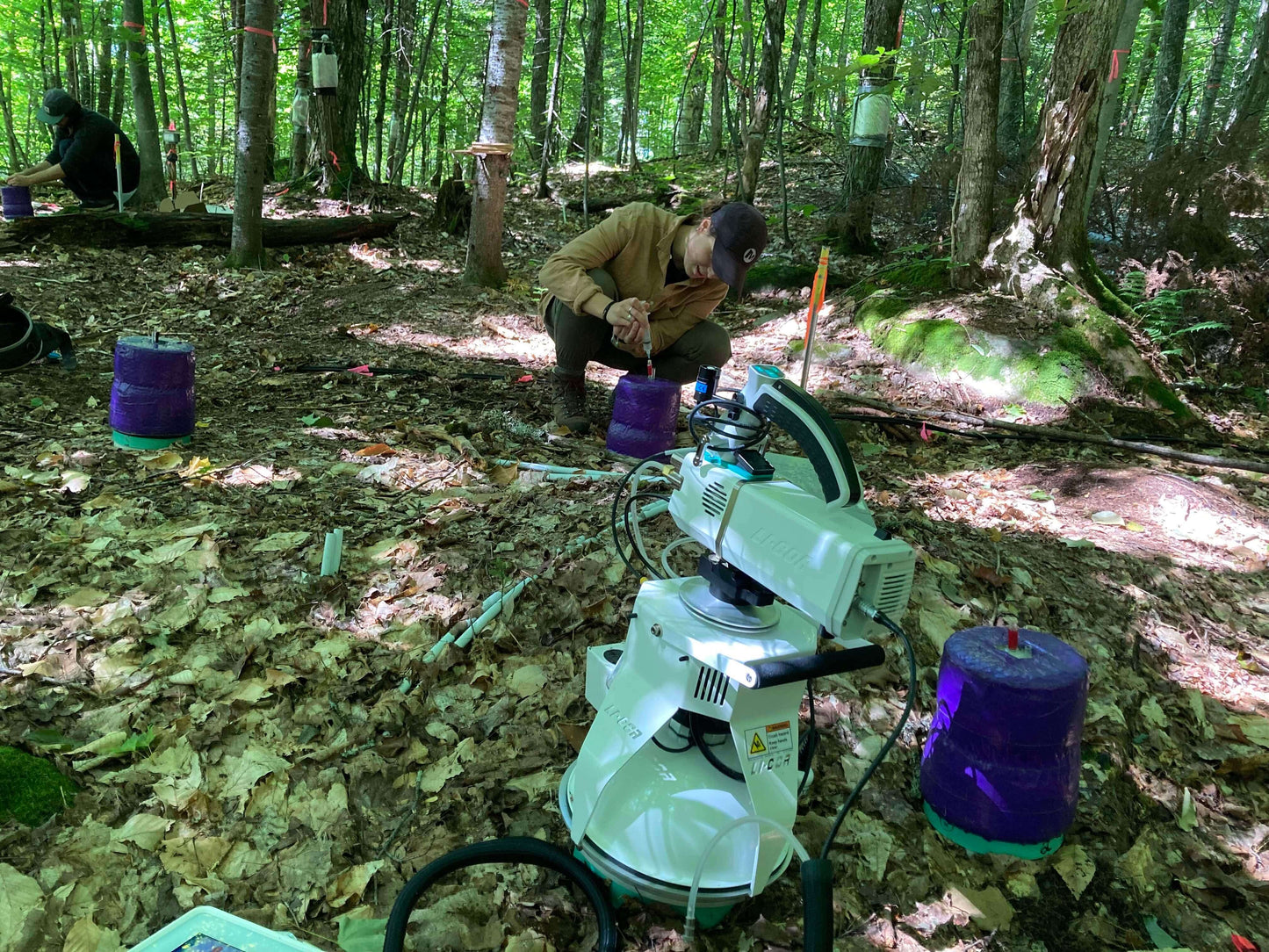
A study co-authored by Sharlène Laberge, published in Discover Soil, March 11, 2025
While forests are often presented as valuable carbon sinks for mitigating the effects of climate change, one question remains largely unexplored: how do their soils—often overlooked components of forest ecosystems—respond to rising temperatures? This is what a team of researchers from Université Téluq, including Sharlène Laberge, Head of Scientific Research and Innovation at Akène, sought to understand in a study recently published in the journal Discover Soil.
Titled "Soil CO₂ and CH₄ response to experimental warming under various tree species compositions in a temperate hardwood forest", the study explores how soil warming affects two greenhouse gases—carbon dioxide (CO₂) and methane (CH₄)—based on tree species composition.
Objective: Simulate Climate Warming in a Temperate Forest
The study was conducted at the Station de biologie des Laurentides (Saint-Hippolyte, Quebec), in a sugar maple stand located at the northern edge of the temperate deciduous forest. Using an experimental setup composed of heating cables, the soil was artificially warmed by 2 °C in order to simulate a warmer climate.
These plots represented three types of stands:
- Mixed forests (with a high presence of balsam fir),
- Deciduous forests,
- And deciduous forests dominated by American beech.
During the snow-free periods of 2021 and 2022 (from May to November), the team measured CO₂ flux (known as soil respiration) and CH₄ flux. Soil respiration includes both root respiration and the respiration of organisms that decompose organic matter.
Results: A Surprising Threshold Effect
Two major findings emerged from this experiment:
1. CO₂: A Variable Response Depending on Temperature and Forest Types
Soil warming initially caused an increase in CO₂ emissions (soil respiration), but only up to a threshold temperature of approximately 15 °C. Beyond this temperature, CO₂ emissions slowed or plateaued.
In beech-dominated forests, this threshold occurred even earlier—around 10 to 12 °C—suggesting a particular sensitivity of these stands to heat. The proposed explanation is linked to what is called the isohydric behaviour of beech during periods of water stress. In short, this means that the pores on its leaves, called stomata, close during drought to reduce water loss, which limits gas exchange with the atmosphere. To compensate for the CO₂ drop absorbed by the leaves, CO₂ is transported from the roots to the leaves, which reduces root respiration and thus soil respiration.
2. CH₄: A Stable Sink Despite the Heat
Unlike CO₂, CH₄ was not affected by the warming. The soils remained a net sink for methane regardless of temperature, soil moisture, or forest type. This confirms that, at least in the short term, well-drained forest soils continue to play an important role in capturing this powerful greenhouse gas.

What This Means for Forest Management
The study reveals that tree species composition strongly influences how soils respond to warming, particularly in terms of CO₂ emissions. This means that forest species selection could become a strategic lever for mitigating the effects of climate change—or at least for limiting some feedback effects.
For example, forests with a high proportion of beech could be more vulnerable to summer droughts induced by warming, even though they are typically associated with more humid conditions due to dense canopy cover.
A Key Study for Understanding Climate Feedback
As the concept of “nature-based climate solutions” gains traction, this study reminds us that the effects of warming on ecosystems are complex—and sometimes counterintuitive. Forest soils do not react uniformly to rising temperatures, and their role in the carbon balance of our forests could shift in unexpected ways.
The research team recommends expanding these investigations over the long term, especially concerning the combined effects of warming and drought on soil behaviour.
To Go Further
👉 The full scientific article is available in open access here:
Read the article in Discover Soil
Congratulations to Sharlène and the entire research team for this important contribution to our understanding of forest soils in a changing climate!

